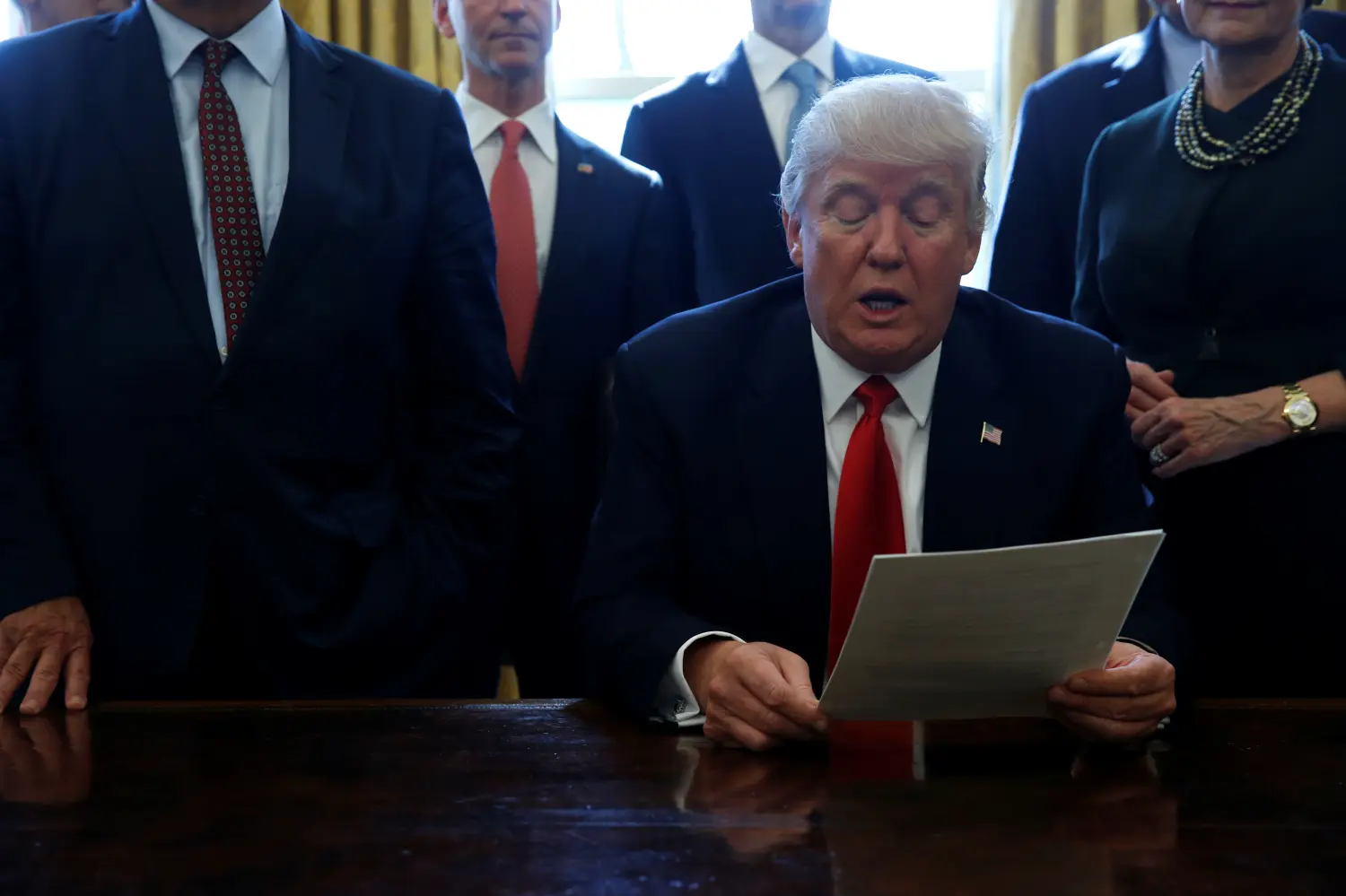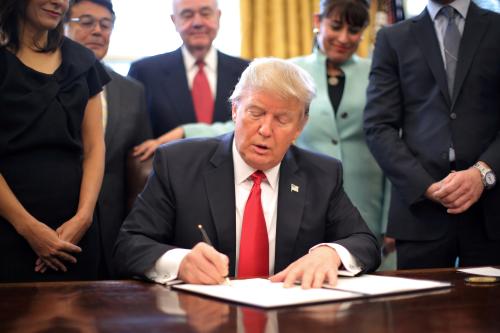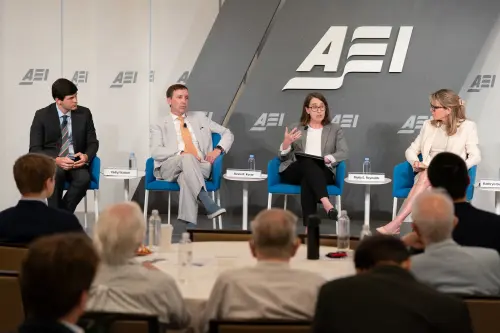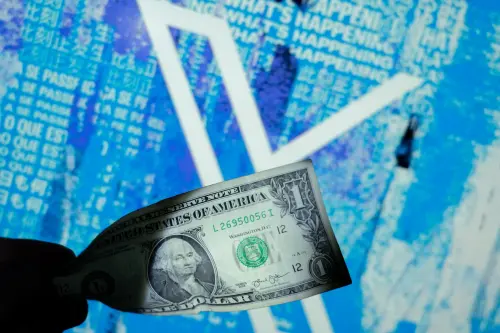This report is part of the Series on Regulatory Process and Perspective and was produced by the Brookings Center on Regulation and Markets.
Then-candidate and now President Trump has said a great deal about deregulation, at one point arguing that “70 percent of regulations can go” and at another point promising to “do a big number” on a set of financial regulations. The White House has continued to emphasize the importance of deregulation, recently hosting an event highlighting its efforts on the issue and releasing a report extolling the growth-promoting virtues of deregulation.
While sometimes short on specifics, such deregulatory rhetoric has been backed by concrete action. Trump signed resolutions invalidating 14 Obama administration rules. He has issued an executive order establishing a regulatory cost budget and requiring agencies to repeal two rules for each new rule. Finally, the Administration has taken steps to withdraw or stay significant rules finalized in the waning months of the Obama administration. Such efforts have spurred both political and academic interest, including a Brookings research study and deregulation tracker.
This frenzy of activity raises an important underlying question: what exactly does the Trump administration mean when it promises to deregulate?1 Put differently, what will deregulation actually look like in practice? This piece attempts to describe what Trump era deregulation might accomplish by providing a typology for thinking about deregulation. In particular, this piece outlines the following notions of deregulation:
- Reducing restrictions on conduct
- Removing outdated, inconsistent, or otherwise unnecessary rules
- Eliminating particular disfavored regulatory impacts
- Increasing competition in a regulated market
While the Administration has gestured toward each of these notions of deregulation, this piece argues that the first is most likely to attract the greatest effort from agencies while the third will receive the most public attention.
Reducing Restrictions on Conduct
Perhaps the most widely shared conception of deregulation is reducing the degree to which legal requirements command or constrain conduct of regulated entities.
Perhaps the most widely shared conception of deregulation is reducing the degree to which legal requirements command or constrain conduct of regulated entities.2 This conception often stems from the view that the government has exercised too much power and control over the behavior of private citizens, companies, non-profits, state and local governments, and other types of regulated entities. In practice, this notion of deregulation generally means reducing the stringency or the scope of federal rules.
Reducing stringency entails maintaining a regulatory requirement but requiring less effort or cost to satisfy that requirement. For instance, the EPA could increase the cap on the amount of a pollutant that may be legally emitted or the Federal Reserve Board could reduce the amount of capital that banks are required to hold. Reducing stringency generally accepts the basic policy goal espoused in the original rule but argues that existing regulation went too far in pursuing that goal.
Reducing scope may entail eliminating a regulation altogether or reducing the set of entities or conduct to which it applies. Eliminating a regulation altogether is likely to attract attention and opposition, at least for rules that still serve a constituency. While deregulatory efforts that eliminate rules altogether attract much of the attention, those reducing the set of entities or conduct to which a rule applies may be more common. To take the examples above, the EPA may exempt small businesses from the pollution cap and the Federal Reserve may eliminate capital requirements for banks that do not engage in risky trading. This approach may attract less attention and opposition while still achieving much of the underlying deregulatory goal. But, as with reducing stringency, it accepts the basic regulatory goal while claiming that the prior rule went too far.
Proponents of these conceptions of deregulation often define success in terms of reducing the measurable quantity of regulation. This impulse may have partially motivated the Trump Administration’s “one in, two out” rule noted above. Common quantity measures of regulation in this vein include: 1) counting the number or reducing the number of rules (or perhaps high impact rules) repealed (as in the Trump executive order described above); 2) reducing the number of rules listed in the Unified Regulatory Agenda3; 3) reducing the number of words in the Code of Federal Regulations.
The Trump administration has drawn upon these measures in arguing that recent growth in regulation necessitates deregulation. However, the Administration has not allowed these measures to be used to determine cost savings, instead requiring use of economic measures. This decision is likely motivated by the fact that these measures are blunt and do not account for the content of the regulation being repealed.4
Removing Outdated, Inconsistent, or Otherwise Unnecessary Rules
This next conception of deregulation seeks to maintain the same level of regulatory scope and stringency while making the rules more efficient and streamlined. The goal is making the regulatory process less costly while achieving the same underlying policy goal. On the surface, this conception of deregulation is the least controversial and the most difficult to oppose. This approach is embodied in some statutes requiring agencies to periodically reassess their rules. It was also the key impetus behind the Obama administration’s executive order requiring agencies to review their rules. Cass Sunstein, who led the Obama effort, has frequently argued that agencies can update and streamline rules to achieve their policy goals more efficiently. Even the Consumer Financial Protection Bureau, generally not known as a proponent of deregulation, has asked for suggestions on “updating, modifying, or eliminating rules because they are outdated, unduly burdensome, or unnecessary.”
One of the Trump executive orders gestures toward this conception of deregulation, urging agencies to eliminate rules that “are outdated, unnecessary, or ineffective.” Time will tell whether the Administration focuses on deregulation of this mundane sort, which usually attracts little attention. Obama administration efforts in this vein produced relatively modest benefits, and in general such efforts may yield diminishing returns over time, particularly given that almost every administration since the 1970’s has launched a similar initiative. Trump officials likely recognize this fact and are therefore likely to devote relatively little effort to this variant of deregulation.
Eliminating Specific Disfavored Regulatory Impacts
Another conception of deregulation is really a variant of either of the two approaches outlined above but with a focus on eliminating particular costs of federal rules. Issues wax and wane in importance but some costs tend to remain salient throughout the years, especially job losses, delays, and compliance costs. This conception of deregulation offers an overarching substantive emphasis rather than particular action items, as is the case with the two approaches outlined above. This conception may resonate the most with the public but not with insiders.
Regulation has long been criticized as being “job-killing.” Such critiques seem to especially resonate in the current debate over employment prospects for the working class. Perhaps for this reason, President Trump’s Executive Order requires agencies to establish regulatory reform task forces that (among other things) “attempt to identify regulations that eliminate jobs, or inhibit job creation.” The President has also frequently promised to eliminate “job-killing regulations.” While substantial empirical debate continues over whether regulation truly kills jobs, the issue is clearly at the forefront of at least the Trump administration’s rhetoric regarding deregulation.
Regulation is also criticized for imposing delays on important activity. This often arises in the context of infrastructure projects; permitting and environmental rules are sometimes viewed as creating long and undue delays relative to both the past and to other countries today. In this context, regulatory delays are often seen as exacerbated by the ability of different local interests and factions to delay projects by raising regulatory objections. For instance, a neighborhood group may challenge the environmental impact statement accompanying a proposed housing development or an environmental group may argue that a new fuel terminal violates air quality rules. Proponents of deregulation often argue that the primary benefit will be reducing such delays. The Trump administration’s recent executive order seeking to streamline environmental review and permitting for infrastructure touches on all of these themes, seeking to better coordinate reviews and ordering a review of certain environmental assessment rules.
Deregulatory proponents also often emphasize reducing compliance costs. In some cases, compliance costs are a large portion of all costs imposed by a regulation. In other cases, compliance costs pale in comparison to the indirect costs of regulation, such as circumscribing or prohibiting conduct. Yet compliance costs frequently receive attention. This may be a product of their visibility. While indirect costs are often hidden and difficult to quantify, compliance costs are more visible and more easily quantified. Perhaps for these reasons, complaints about the cost of regulation are sometimes shorthand for compliance costs. The cost of filling out paperwork has received perhaps the most attention of such costs. Indeed, Congress passed an entire statute charging agencies with evaluating this cost. Other compliance costs such as staff time and expenditures for compliance consultants and compliance officers are also frequently mentioned.
Increasing Competition in a Regulated Market
In the 1970’s, the term deregulation was often associated with eliminating rules to reduce barriers to entry in a heavily regulated market. In this conception, the primary goal is creating a more competitive market. Restrictions on price and market entry are often relaxed to induce greater competition. Deregulation of this sort may be accompanied by new rules to safeguard the deregulated market. Prominent examples include deregulation of the airline, long-distance telecommunications, and trucking industries.5 This form of deregulation may attract support across the political spectrum. For instance, consumer advocacy groups and free market organizations supported many of the deregulatory efforts in the 1970s.
Today there may be fewer opportunities for such deregulation that attract broad political support. The easiest opportunities may have already been deregulated (and of course the political climate is also more polarized). More recent efforts to deregulate production, transmission, and distribution energy markets have proven more difficult and turbulent than airline or trucking deregulation, for instance. One area that has drawn more recent attention is occupational licensing requirements for professions such as hairdressers, interior designers, and cosmologists. Critics of such licensing regimes argue that they increase wages of those who hold licenses while providing little or no corresponding health, safety, or quality control benefit to consumers. Such regimes therefore represent rent-seeking that disproportionately impacts low-income consumers, who spend a higher portion of their income on such services. The Trump administration has noted this issue and it will be interesting to see the extent to which it receives sustained focus.
Conclusions
Elements of the Trump administration’s efforts at “deregulation” appear to fall within all four of these conceptions of deregulation. It is not yet completely clear which conceptions will be emphasized, as the Administration to date has largely focused on unwinding or staying rules issued toward the end of the Obama era. Action from here onward will be less reactive and will entail greater discretionary judgment. In thinking about how the administration will exercise this judgment, it is important to think about presidential incentives.
Presidents respond to political incentives when managing agencies. Importantly, presidents need to reward and mobilize insiders while maintaining popular national appeal to ordinary voters. The Administration’s efforts thus far suggest that it will seek to pursue these goals by focusing primarily on the first notion of deregulation (reducing the scope and stringency of regulation) in specific areas that are important to key supporters while publicly emphasizing popular themes such as reducing job losses, delays, and compliance costs (the themes in the third notion of deregulation). Efforts in the other conceptions of deregulation are less likely to serve the administration’s interests. Technocratic efforts to streamline existing rules will excite neither the public nor key elite supporters. Deregulating industries is likely to be slow and controversial, consuming time and political capital. The best bet thus seems to be eliminating or curtailing specific rules that matter to key supporters while publicly emphasizing popular themes. Of course the administration’s deregulatory efforts are still in their early stages and watching the details will be critical to understand exactly what they make “deregulation” mean in practice.
The SEC disclaims responsibility for any private publication or statement of any SEC employee or Commissioner. This Article expresses the author’s views and does not necessarily reflect those of the Commission or other members of the staff.
The author did not receive financial support from any firm or person for this article or from any firm or person with a financial or political interest in this article. He is currently not an officer, director, or board member of any organization with an interest in this article.
-
Footnotes
- The Trump executive order promises to reduce regulatory costs, which it defines by reference to prior OMB guidance. This definition may accommodate all of the examples of deregulation discussed in this piece.
- For an example, see Senate Report 1018, 96th Congress, 2d Session 1, 2 (1980) (“Deregulation has been defined simply as ‘cutting back Federal controls’”).
- One analysis noted that the Unified Regulatory Agenda has shrunken by one-third under Trump.
- A new measure attempts to mitigate this problem by analyzing the degree to which the Code of Federal Regulations uses prescriptive words. This technique will presumably evolve with improvements in natural language processing.
- For examples, see David Graham and Daniel Kaplan, Competition and the Airlines: An Evaluation of Deregulation, Civil Aeronautics Board Staff Report (December 1982); Richard Cudahy, The Folklore of Deregulation, 15 Yale J. on Reg. 427 (1998).






